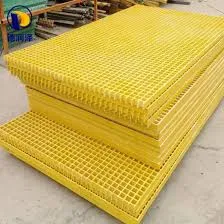
-
 Afrikaans
Afrikaans -
 Albanian
Albanian -
 Amharic
Amharic -
 Arabic
Arabic -
 Armenian
Armenian -
 Azerbaijani
Azerbaijani -
 Basque
Basque -
 Belarusian
Belarusian -
 Bengali
Bengali -
 Bosnian
Bosnian -
 Bulgarian
Bulgarian -
 Catalan
Catalan -
 Cebuano
Cebuano -
 China
China -
 China (Taiwan)
China (Taiwan) -
 Corsican
Corsican -
 Croatian
Croatian -
 Czech
Czech -
 Danish
Danish -
 Dutch
Dutch -
 English
English -
 Esperanto
Esperanto -
 Estonian
Estonian -
 Finnish
Finnish -
 French
French -
 Frisian
Frisian -
 Galician
Galician -
 Georgian
Georgian -
 German
German -
 Greek
Greek -
 Gujarati
Gujarati -
 Haitian Creole
Haitian Creole -
 hausa
hausa -
 hawaiian
hawaiian -
 Hebrew
Hebrew -
 Hindi
Hindi -
 Miao
Miao -
 Hungarian
Hungarian -
 Icelandic
Icelandic -
 igbo
igbo -
 Indonesian
Indonesian -
 irish
irish -
 Italian
Italian -
 Japanese
Japanese -
 Javanese
Javanese -
 Kannada
Kannada -
 kazakh
kazakh -
 Khmer
Khmer -
 Rwandese
Rwandese -
 Korean
Korean -
 Kurdish
Kurdish -
 Kyrgyz
Kyrgyz -
 Lao
Lao -
 Latin
Latin -
 Latvian
Latvian -
 Lithuanian
Lithuanian -
 Luxembourgish
Luxembourgish -
 Macedonian
Macedonian -
 Malgashi
Malgashi -
 Malay
Malay -
 Malayalam
Malayalam -
 Maltese
Maltese -
 Maori
Maori -
 Marathi
Marathi -
 Mongolian
Mongolian -
 Myanmar
Myanmar -
 Nepali
Nepali -
 Norwegian
Norwegian -
 Norwegian
Norwegian -
 Occitan
Occitan -
 Pashto
Pashto -
 Persian
Persian -
 Polish
Polish -
 Portuguese
Portuguese -
 Punjabi
Punjabi -
 Romanian
Romanian -
 Russian
Russian -
 Samoan
Samoan -
 Scottish Gaelic
Scottish Gaelic -
 Serbian
Serbian -
 Sesotho
Sesotho -
 Shona
Shona -
 Sindhi
Sindhi -
 Sinhala
Sinhala -
 Slovak
Slovak -
 Slovenian
Slovenian -
 Somali
Somali -
 Spanish
Spanish -
 Sundanese
Sundanese -
 Swahili
Swahili -
 Swedish
Swedish -
 Tagalog
Tagalog -
 Tajik
Tajik -
 Tamil
Tamil -
 Tatar
Tatar -
 Telugu
Telugu -
 Thai
Thai -
 Turkish
Turkish -
 Turkmen
Turkmen -
 Ukrainian
Ukrainian -
 Urdu
Urdu -
 Uighur
Uighur -
 Uzbek
Uzbek -
 Vietnamese
Vietnamese -
 Welsh
Welsh -
 Bantu
Bantu -
 Yiddish
Yiddish -
 Yoruba
Yoruba -
 Zulu
Zulu
frp settler
Understanding the FRP Settler A Key Component in Modern Wastewater Treatment
The FRP (Fiber Reinforced Plastic) settler has emerged as a critical innovation in the field of wastewater treatment, addressing the pressing need for efficient and sustainable solutions to manage water pollution. With the world grappling with increasing industrial activities and population growth, the demand for effective wastewater management systems has never been more urgent.
Understanding the FRP Settler A Key Component in Modern Wastewater Treatment
The operation of an FRP settler typically involves a gravity-driven process where wastewater flows into the settling tank, allowing solids to settle at the bottom while the clarified liquid rises to the top. This separation is enhanced through the use of various design features, including inclined plates or tubes, which increase the surface area for solid deposition. The use of FRP in these designs has led to improved performance in clarifying wastewater, making it suitable for further treatment or discharge into the environment.
frp settler

One of the most significant advantages of FRP settlers is their adaptability to various applications. They can be tailored to suit specific industries, including municipal wastewater treatment plants, chemical processing, food and beverage manufacturing, and mining operations. Their modular design allows for easy installation and scaling, making them an attractive option for both new facilities and retrofitting existing systems.
Moreover, the environmental benefits of FRP settlers are substantial. By effectively removing solids and reducing turbidity in wastewater, these systems help to minimize the impact of industrial discharges on water bodies. This not only aids in compliance with environmental regulations but also contributes to the conservation of aquatic ecosystems, promoting biodiversity.
As we look towards the future, the role of advanced materials like FRP in wastewater treatment will likely continue to expand. With innovations in engineering and technology, FRP settlers may incorporate smart monitoring systems that provide real-time data on performance and efficiency. This could lead to even greater optimization of wastewater treatment processes, enhancing their effectiveness and sustainability.
In conclusion, the FRP settler represents a significant advancement in wastewater treatment technology. Its combination of durability, efficiency, and adaptability makes it an essential tool in the ongoing efforts to protect our water resources. As industries strive to reduce their environmental footprint, the adoption of innovative solutions like FRP settlers will play a vital role in achieving sustainable wastewater management.
Latest news
-
FRP Hood Durable & Lightweight Fiberglass Hood SolutionsNewsApr.29,2025
-
Heavy-Duty Jackhammers for Construction Work Powerful & Portable Electric Demolition ToolsNewsApr.29,2025
-
High-Strength Fiberglass Flanges FRP Blind & Custom Flange SolutionsNewsApr.28,2025
-
Fiberglass Pipe Flanges High-Pressure & Corrosion-Resistant SolutionsNewsApr.28,2025
-
FRP Fuel Tanks Durable Fiberglass & PP Composite Fuel Storage SolutionsNewsApr.28,2025
-
FRP Trough Covers Durable Industrial Protective SolutionsNewsApr.28,2025









